Research

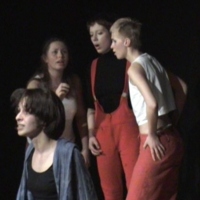
Song Cycles
Since 2004, Ben Spatz has guided the development of five original song cycles:
- The Master and Margarita (2004-2005).
For URT in Poland, based on text by Bulgakov. - Stone Songs (2006).
For Stone Soup Theatre Arts' production of Stone by Edward Bond. - First Song Cycle (2006-2009).
For the individual research and training of Ben Spatz. - Second Song Cycle (2007-2009).
For the individual research and training of Michele Farbman. - Childrens Blood Songs (2009).
For "Untitled Project," currently in development by URT.
Three of these song cycles were created for theatrical use. Two were developed as individual research and training projects. The theatrical song cycles had words in English or Polish, while the individual research/training song cycles were structured around precise but non-linguistic syllables. Every song cycle also involves elements of musical structure such as melody, rhythm, harmony, dynamics, call and response, and vibratory quality.
Ben approaches songs as channels for action, and singing as a generative act through which individuals and groups can discover many possibilities both human and theatrical. This approach owes a great deal to the Gardzienice Theatre Association, the Workcenter of Jerzy Grotowski and Thomas Richards, and other artists and teachers mentioned on our "Artistic Family" page. In addition, many specific elements of musicality have been drawn from diverse song traditions including those of Poland and Bulgaria, Italy and the United States, South Africa and Caucasus Georgia, ancient Greece, and the Afro-Carribean diaspora.
Urban Research Theater recently performed a set of World War II Italian partisan songs at the Cherry Lane Theatre. This was part of an event organized by Valentina and Mario Fratti to benefit the Italian city of l'Aquila after the recent earthquake.
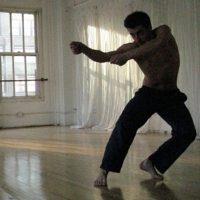
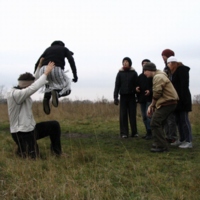
Physical Training
From 2007 to 2009, Ben and Michele developed a practice of physical work based on attentive perception, mimetic communication ("following"), and the daily search for individual, organic flow through the body. This practice was influenced by various disciplines and techniques drawn from contemporary dance, physical theater, martial arts, and authentic movement. One of the main characteristics of this work was that it explicitly avoided using repeatable or choeographed movement structures.
Since the beginning of 2009, Urban Research Theater's physical training has been led by Massimiliano Balduzzi. Massimiliano's approach to physical training for the actor is based on the creation and development of original physical actions that are both precise and flexible. Through daily, long-term work on a sequence of such actions, the performer can gradually deepen the relationship between the mechanics of the human body and the associative and rhythmic work of an actor.
Massimiliano's work is profoundly informed by his long-term collaboration with director and master teacher Anne Zenour in Italy, as well as by Balinese dance and other forms. (See "About Us" for more details.) He recently gave a short work demonstration at the Centre for Performance Research in Brooklyn.
Physical training and research is an essential basis for both our song-based research and our performance works. We are interested in making connections in the NYC contemporary dance community and in learning how our work on the body may be perceived by dancers.
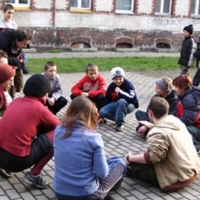
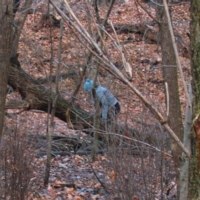
Urban Expeditions
Urban Research Theater is permanently invested in the exploration and rediscovery of urban spaces through performance-related practice. Our urban expeditions generally include a great deal of silent, active meditation as well as explorations through song and movement. Every urban expedition is a unique experience for the group that undertakes it.
Some locations of past urban expeditions include:
- Neighborhoods of Brochow and Tarnogaj in Wroclaw, Poland.
- Slenze Mountain outside Wroclaw, Poland.
- Plac Targowy and surrounding area in Wroclaw, Poland.
- Central Park's North Woods area, New York City.
- West 14th Street area and Financial District, Manhattan.
- East Williamsburg Industrial Park, Brooklyn.
- Various communities of religious ritual, New York City
In addition to organizing urban expeditions as part of our work sessions and workshops (see "Another City" under workshops), we consider our location in New York City to be a vital aspect of our practice. A crucial question for us is how techniques of song, movement, and action can serve the human animal in its modern urban context.
We have extended an open invitiation for practical exchange to qualified groups and individuals in the New York area. Through exchanges of this nature, we hope to expand our network of partner organizations and to share in the broader community of embodied practitioners.
